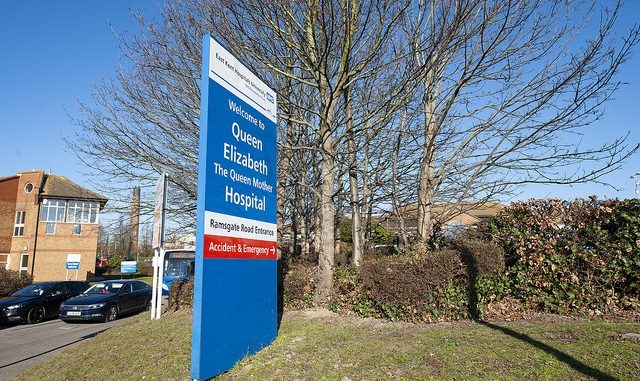
Health campaigners have questioned figures used during a public consultation to show that QEQM Hospital does not treat enough stroke cases to warrant a hyper-acute unit at the site.
Save Our NHS in Kent (SONiK) members submitted a freedom of information request to establish the number of stroke cases treated at QEQM and the William Harvey Hospital in Ashford between 2017 and September of this year.
According to consultation documents from the Kent and Medway NHS: “(Stroke) units should see a minimum of 500 patients a year to make sure staff maintain and develop their specialist skills.”
SONIK says the figure for QEQM in 2016-2017 was 372 confirmed strokes but for 2017/18 this rose to 549 and then again for 2018/19 to 608 with 328 confirmed cases from April to September 2019.

Campaigners say this figure was not discussed during consultation events looking at the plan to close acute stroke services at Kent and Medway hospitals, including QEQM, in favour of specialised hyper-acute stroke units at Darent Valley Hospital, Maidstone Hospital and William Harvey Hospital in Ashford.
During a listening event in 2018 the need for 500-plus cases was iterated by those leading the stroke review.
The plan, which was approved in February, would mean Thanet acute stroke patients travelling to Ashford. SONiK says the journey is too far and there should be a fourth HASU in Thanet. The group says the figures released in the FOI support this.
The increase in figures for QEQM and WHH is due to the closure of stroke services at Canterbury hospital in 2017. This resulted in Canterbury patients being treated in Thanet or Ashford rather than an overall rise in stroke cases across east Kent.
Figures ‘warrant’ 2 HASUs in east Kent

Jon Flaig, chair of Save Our NHS In Kent (SONIK), said: “Anyone who attended the stroke ‘listening events’ will have heard senior NHS figures insisting that four hyper acute stroke units in the county could not be supported due to a requirement for 500 strokes at least per unit.
“They said that because Margate hospital had less than 500 per year, it wasn’t reasonable to have a HASU in Thanet. We now know that during 2018 stroke numbers were much higher in Margate.
“At the point in time when NHS bosses were arguing that QEQM’s stroke admissions were too low, they were actually high enough to warrant a HASU at both the William Harvey hospital in Ashford and the QEQM in Margate.”
“Critically, the information provided by NHS bosses for the public consultation was based on figures compiled prior to the closure of the Canterbury stroke unit and so did not take into the account the inevitable rise in stroke victims being treated in Margate after Canterbury closed.”
SONIK say the figures could mean decisions by Kent County Council Health Overview and Scrutiny Committee (HOSC) and the Joint Health Overview and Scrutiny Committee (JHOSC) backing the HASU plan were not fully informed.
QEQM not selected due to ‘combination of factors’
A spokesperson for the Kent and Medway stroke review said there were a combination of reasons for QEQM being discounted from hosting a HASU which included a lack of other specialised services on site and the practical issues of one trust running two HASU sites.
They said: “In June 2017 the Kent and Canterbury Hospital stopped receiving emergency patients with a suspected stroke. Since then, patients who would have gone to the Kent and Canterbury Hospital have been treated at either Queen Elizabeth the Queen Mother (QEQM) Hospital, Margate or William Harvey Hospital, Ashford. This has led to an increase in the number of stroke patients admitted at both QEQM and William Harvey hospitals but it has not changed the overall number of stroke admissions in east Kent or across the county.
“The Kent and Medway stroke review undertook a rigorous evaluation of all the possible combinations of sites for new hyper acute stroke units (HASUs) in Kent and Medway. QEQM made it through to the medium list of 13 options but not the shortlist of five because of a combination of factors.
“These included the fact that QEQM has fewer of the specialised services it is desirable to have alongside a HASU than other hospitals and the challenge of recruiting enough specialist stroke staff to run two HASUs in east Kent. These factors have not changed.
“There is clinical evidence that patient care improves with the volume of patients treated in a HASU. It is increasingly accepted that the previous minimum number of 500 confirmed strokes a year is too low and a HASU should consistently treat a minimum of 600 confirmed strokes.”

